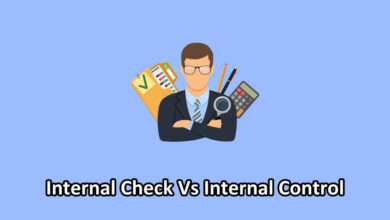When it comes to business, there are many terms and concepts that can be difficult to understand. Mergers and acquisitions are two such concepts that are often confused with one another. But what is the distinction between them? Read on to find out in this comprehensive article, which includes a helpful table outlining the differences between merger and acquisition.
Merger Vs Acquisition(Comparison Table)
| Merger | Acquisition |
|---|---|
| A merger occurs when two separate companies combine to form a new and joint company. | An acquisition occurs when one company buys another company and gains control of its operations. |
| In a merger, both companies merge/combine to form a new company. Shareholders of each company will own an equal stake in the new company. | In the case of acquisition, one company will purchase another and will assume complete control |
| Both companies have an equal say in decision-making. | The acquiring company has control over decision-making. |
| A merger usually involves two companies of roughly equal size. | An acquisition can involve any size difference between the two companies, with the larger company acquiring the smaller one |
| A merger is typically structured as a stock swap, whereby each company’s shareholders receive new shares in the combined company. | It is usually structured as a purchase of assets or equity, whereby the acquiring company pays cash or stock to the shareholders of the target company |
| The purpose of the merger is to create synergies and economies of scale by combining two companies. | The purpose of the acquisition is to gain market share or access to new technology or products. |
| A merger is typically negotiated between the Board of Directors of each company. | An acquisition is typically negotiated between the senior management of each company |
| It usually requires regulatory approval from antitrust authorities. | It usually does not require regulatory approval unless the acquired company represents a large percentage of the industry’s total sales or assets. |
What is Merger?
When two companies decide to join forces, it’s called a merger. A merger happens when two companies of roughly equal size combine. The existing management team from both organizations typically stays in place, and the combined company takes on a new name. For example, when Bank of America merged with Merrill Lynch in 2009, the new organization was called Bank of America Merrill Lynch.
Types of Merger
There are several different types of mergers, but the most common are:
- Horizontal Mergers: This type of merger occurs when two companies that offer similar products or services join forces in order to gain market share or efficiencies. An example of a horizontal merger would be if two airlines decided to merge.
- Vertical Mergers: A vertical merger is one where companies that are in different stages of the same production process join forces. An example would be if a manufacturer of car parts merged with an auto assembly company. The goal of a vertical merger is usually to increase efficiencies or expand market reach.
- Conglomerate Mergers: A conglomerate merger occurs when two companies that aren’t related come together. The rationale behind these types of deals is often to diversify businesses and reduce risk. An example would be if a company that made office furniture merged with an airline.
Advantages of Merger
Here are five potential pros and five potential cons of a merger:
- Increased market share: A merger can allow the combined company to have a larger market share, which can lead to increased bargaining power and competitiveness.
- Cost savings: A merger can result in cost savings through economies of scale, such as by eliminating duplicate functions or by purchasing supplies in larger quantities.
- Diversification: A merger can allow the combined company to diversify its product offerings or customer base, which can reduce risk.
- Increased efficiency: A merger can lead to increased efficiency as the combined company can streamline processes and eliminate duplication of effort.
- Access to new technology or resources: A merger can provide access to new technology or resources that the acquiring company may not have had access to previously.
Disadvantages of Merger
- Culture clash: When two companies merge, they may have different corporate cultures, which can lead to conflict and difficulties in integration.
- Layoffs: A merger can result in layoffs as the combined company looks to streamline and eliminate duplicate functions.
- Loss of autonomy: The acquiring company may want to impose its own systems and processes on the acquired company, leading to a loss of autonomy for employees of the acquired company.
- Decreased innovation: The combined company may become risk-averse and focus on short-term goals, leading to decreased innovation.
- Legal and regulatory challenges: Mergers can be complex and time-consuming, and may face legal and regulatory challenges.
What is Acquisition?
An acquisition is when one company buys another. The buyer takes on the target company’s assets and liabilities, and the target company ceases to exist as a separate entity. A merger is when two companies combine to form a new company. Both companies’ shareholders vote to approve the merger, and the resulting company has a new name and stock ticker symbol.
In an acquisition, one company buys another and the target company ceases to exist as a separate entity. The buyer takes on the target company’s assets and liabilities. In a merger, two companies combine to form a new company. Both companies’ shareholders vote to approve the merger, and the resulting company has a new name and stock ticker symbol.
Types of Acquisition
The three main types of acquisition:
- Horizontal acquisition: This type of acquisition involves a company acquiring another company in the same industry or market. The goal is usually to increase market share, access new customers, or gain access to new technologies or resources.
- Vertical acquisition: It involves a company acquiring a company that is in a different stage of the production process. For example, a manufacturer may acquire a supplier or a retailer may acquire a wholesaler. The goal is usually to integrate the operations and streamline the supply chain.
- Conglomerate acquisition: This type of acquisition involves a company acquiring a company that operates in a completely different industry or market. The goal is usually to diversify the company’s operations and reduce risk.
Advantages of Acquisition
Here we have mentioned five of the main advantages of acquisition.
- Increased market share: Acquiring another company can help a company increase its market share and reach a larger customer base.
- Access to new technologies and resources: Acquiring another company can give a company access to new technologies, intellectual property, and other valuable resources that can help it compete more effectively in the market.
- Increased efficiency: Acquiring another company can help a company streamline its operations and become more efficient by eliminating duplicative functions and processes.
- Diversification: Acquiring another company can help a company diversify its operations and reduce risk by expanding into new markets or industries.
- Synergies: Acquiring another company can create synergies, or cost savings and revenue enhancements, by combining complementary functions or capabilities.
Disadvantages of Acquisition
The three cons of acquisition are as follows.
- Integration Risk: Integrating two companies can be a complex and time-consuming process, and there is a risk that the integration may not go smoothly.
- Cultural Differences: Acquiring another company can bring together two different cultures and ways of doing things, which can be challenging to manage.
- Cost: Acquiring another company can be expensive, and there is a risk that the acquisition may not provide the expected return on investment.
7 Key Differences Between Merger and Acquisition
In order to understand how these two terms differ in terms of different factors, read out the following key differences.
- Definition: A merger occurs when two companies decide to combine their forces to form a new and joint company. . An acquisition, on the other hand, occurs when one company buys another company and gains control of its operations. The company that is being acquired may be absorbed into the acquiring company or may continue to operate as a separate entity.
- Control: In a merger, both companies merge/combine to form a new company. This means that the shareholders of each company will own an equal stake in the new company. On the other hand, in an acquisition, one company will purchase another and will assume complete control.
- Size: A merger usually involves two companies of roughly equal size. An acquisition, on the other hand, can involve any size difference between the two companies, with the larger company acquiring the smaller one.

Conclusion
So finally, mergers and acquisitions are two distinct concepts, each offering its own advantages. The main difference between mergers and acquisitions is that mergers involve combining businesses to create a new entity. On the other hand, acquisitions involve one company taking over another. Depending on the situation, either option can be beneficial for companies looking to expand their market share or diversify their operations. With this in mind, it is important to assess both options carefully and make an informed decision that works best for your business goals.




3 Comments